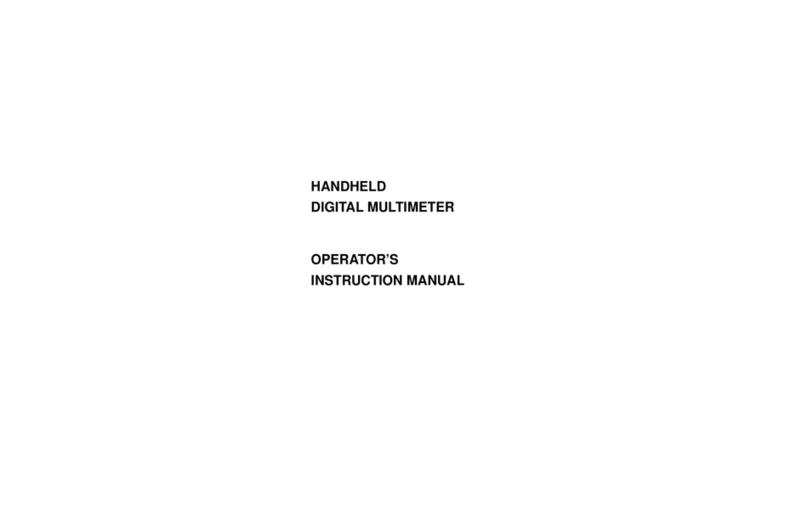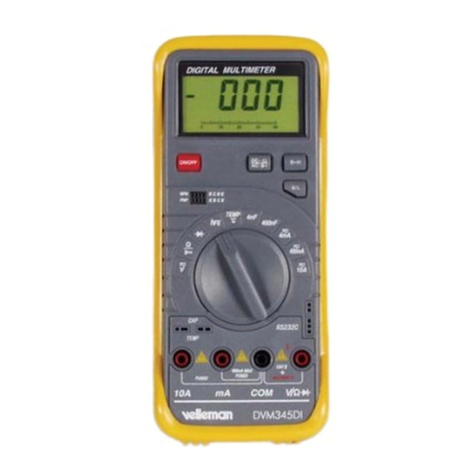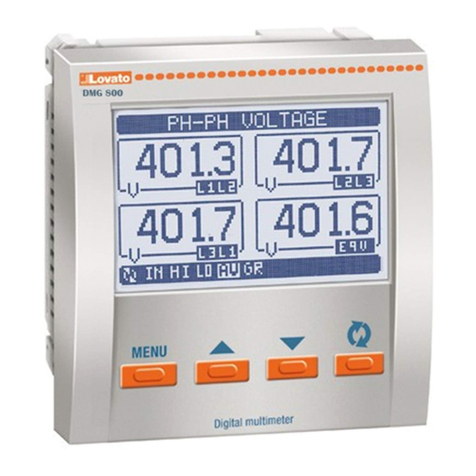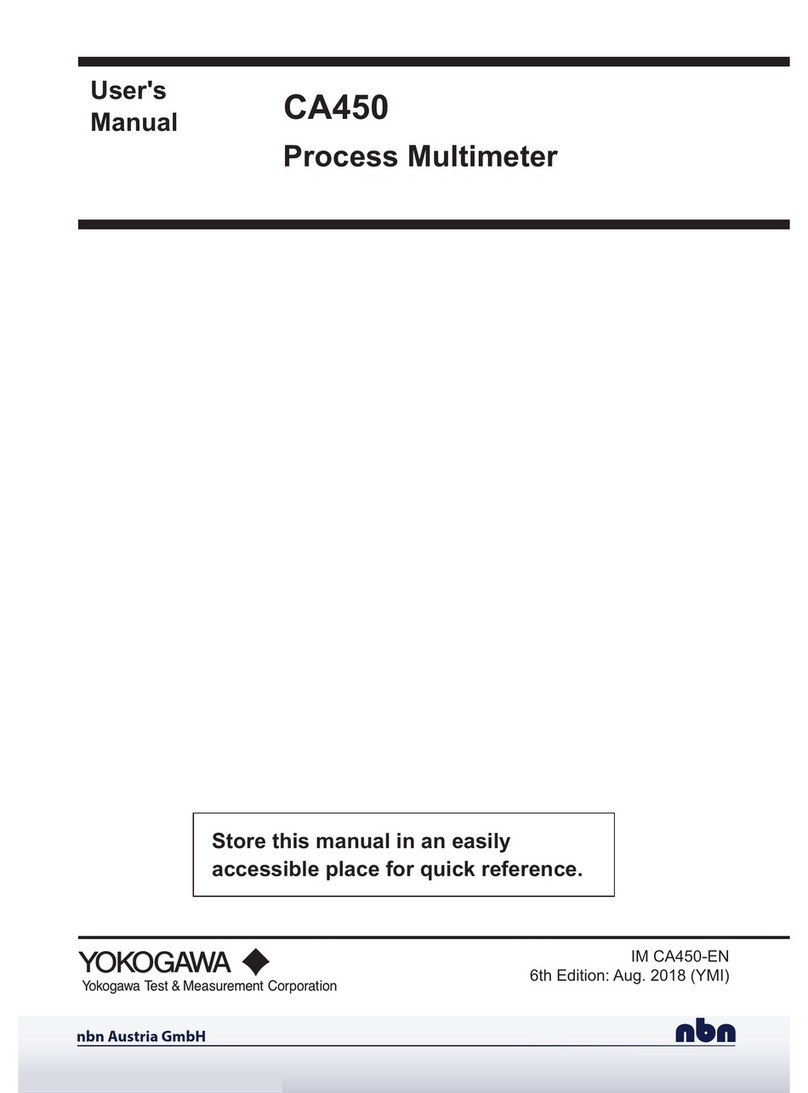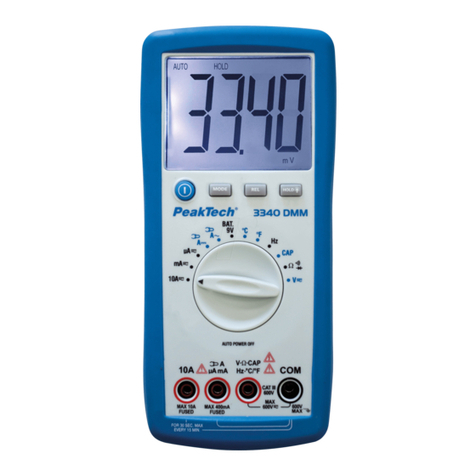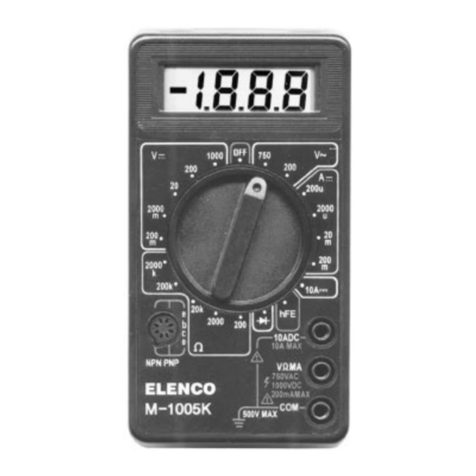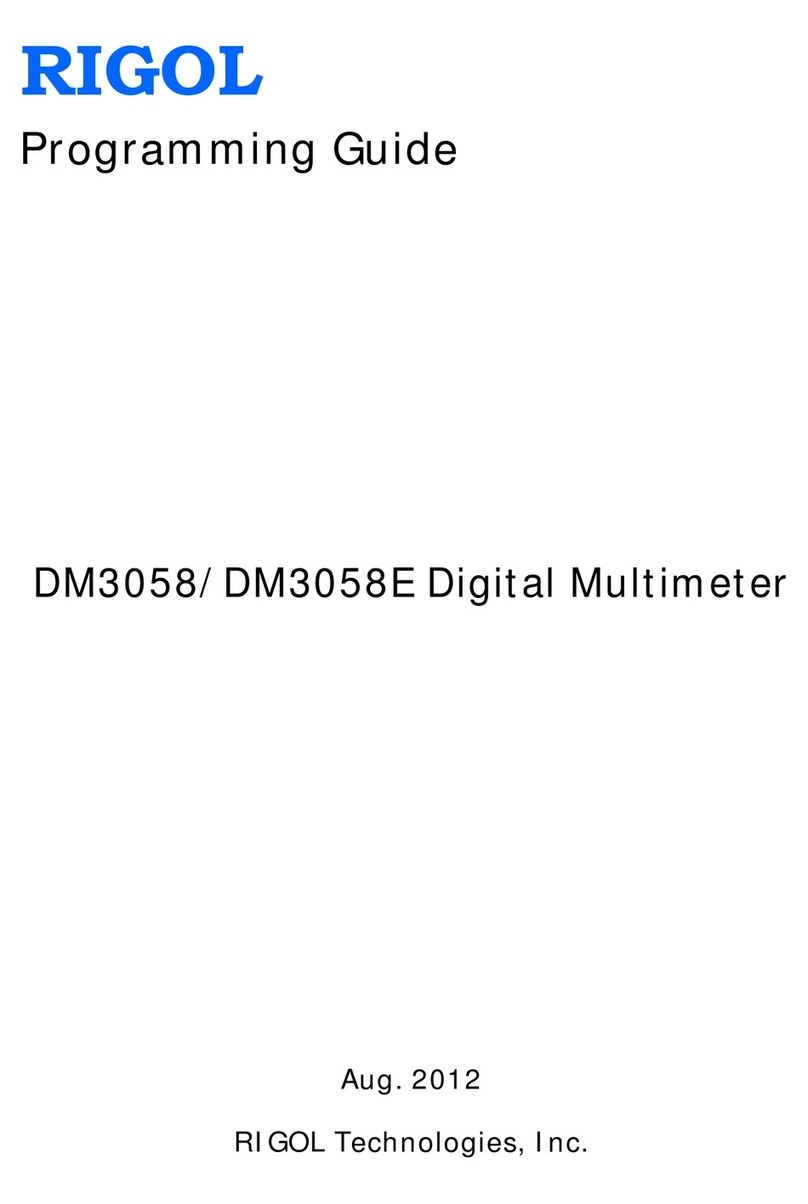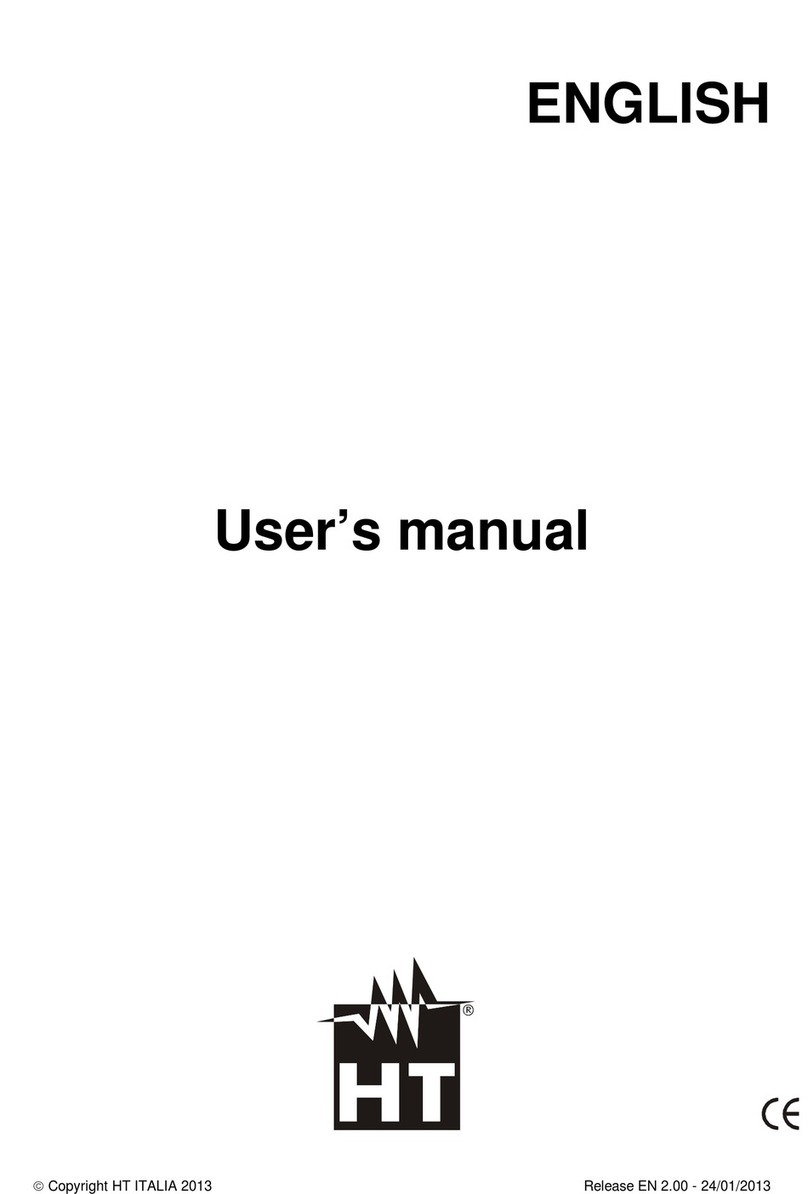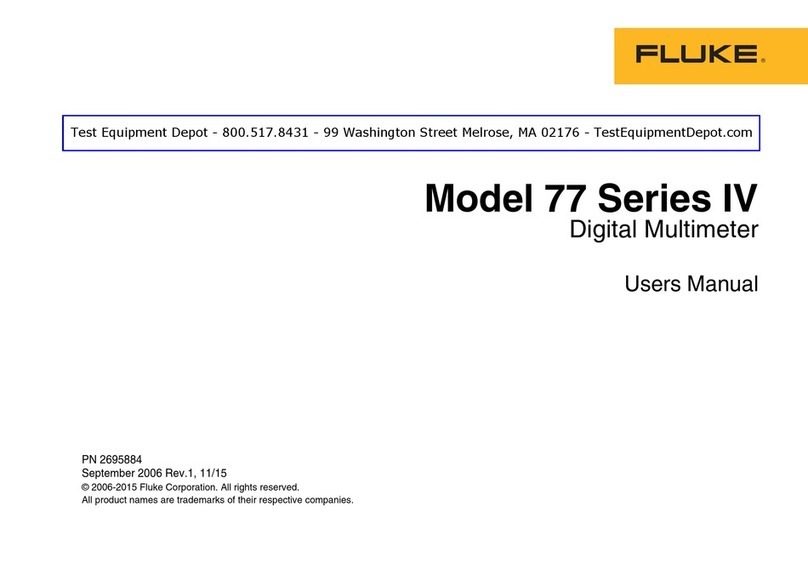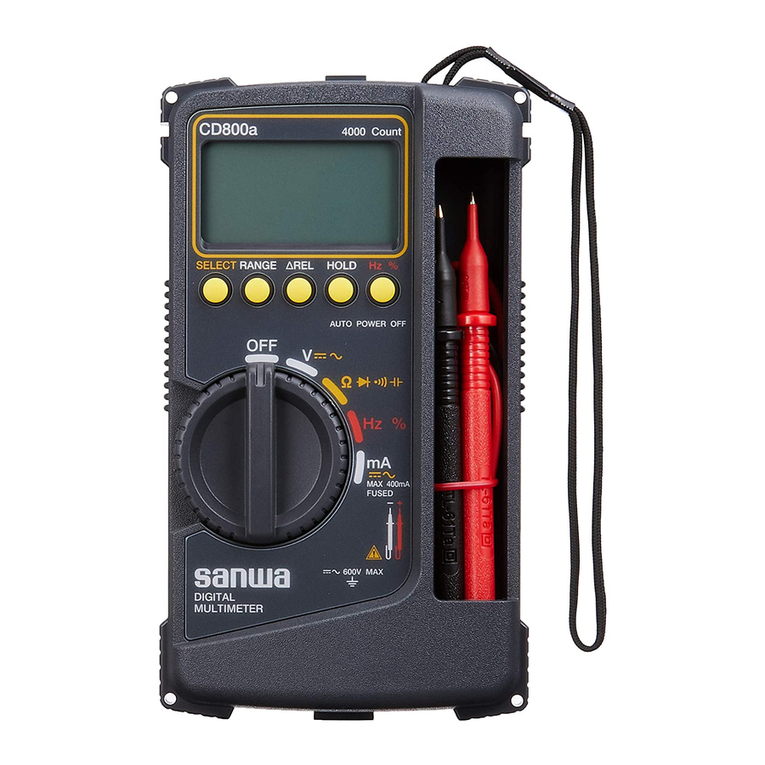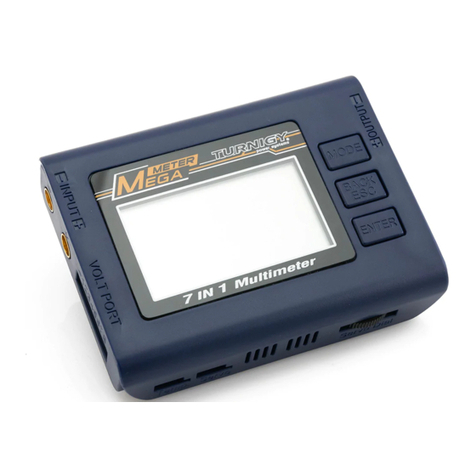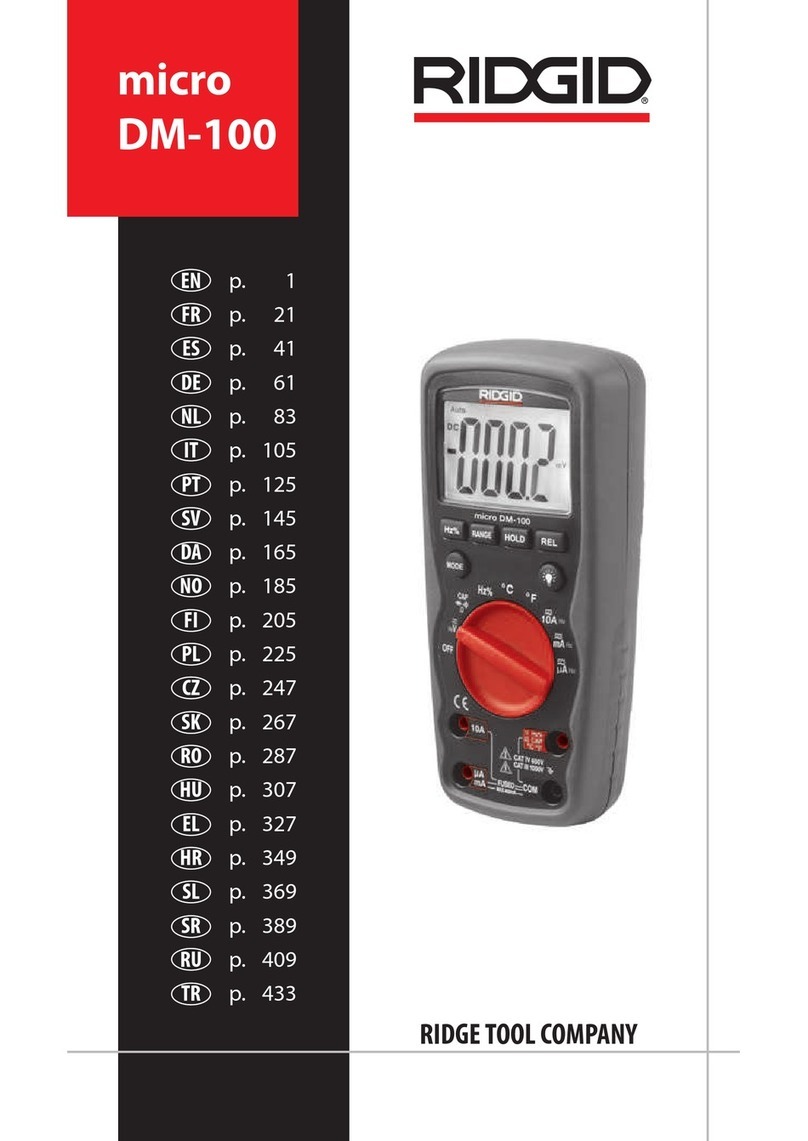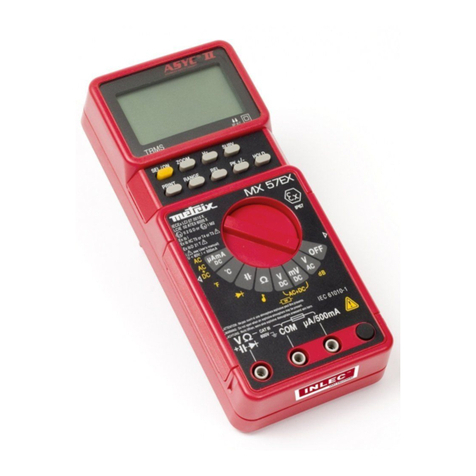Stalwart XL830L User manual

Digital multi-meter multi-tester
INSTRUCTION MANUAL

SAFETY INFORMATION
This multi-meter has been designed according to IEC-1010 concerning electronic measuring instruments with
an overvoltage category (CAT Ⅱ) and pollution 2.
Follow all safety and operating instructions to ensure that the meter is used safely and is kept in good operating
condition.
Full compliance with safety standards can be guaranteed only with best leads supplied. If necessary, they must
be replaced with the type specified in this manual.
SAFETY SYMBOLS
Important safety information, refer to the operating manual.
Dangerous voltage may be present.
Earth ground.
Double insulation(Protection class Ⅱ)
Fuse must be replaced with rating specified in the manual
MAINTENANCE
Before opening the case, always disconnect test leads from all energized circuits
For continue protection against fire, replace fuse only with the specified voltage and current ratings:
F200mA/250V (Quick Acting)
Never use the meter unless the back cover is in place and fastened completely
Do not use abrasives or solvents on the meter. To clean use a damp cloth and mild detergent only
DURING USE
Never exceed the protection limit values indicated in specifications for each range of measurement
When the meter is linked to measurement circuit, do not touch unused terminals
Never use the meter to measure voltages that might exceed 600V above earth ground in category Ⅱ
installations
When the value scale to be measured in unknown before hand, set the range selector at the highest
position.
Before rotating the range selector to change functions, disconnect test leads from the circuit under test.
When carrying out measurements on TV or switching power circuits always remembers that there may be
high amplitude voltages pulses at test points, which can damage the meter.
Always careful when working with voltages above 60V dc or 30V ac rms. Keep fingers behind the probe
barriers while measuring.
Before attempting to insert transistors for testing, always be sure that test leads have been disconnected
from any measurement circuits.
Components should not be connected to the hFE socket when making voltage measurements with test

leads. Never perform resistance measurements on live circuits.’
GENERAL DESCRIPTION
The meter is a handhold 31/2 digital multi-meter for measuring Dc and AC voltage, DC current, Resistance,
Diode, Transistor and Continuity Test with battery operated
FRONT PANEL DESCRIPTION
①Display
31/2digit, 7segment, 15mm high L CD.
②Hold button
When this button is pushed, the display will keep the test reading and “H“symbol will appear on the LCD until
pushing it again
③Rotary switch
This switch is used to select functions and desired ranges as well as to turn on/off the meter
④“COM” jack
Plug in connector for black (negative) test lead.
⑤“10A” jack
Plug in connector for red test lead for 10Ameasurement
⑥“V.Ω.mA” jack
Plug in connector for red (positive) test lead for voltage, resistance and current (except 10A) measurements.
⑦Backlight
SPECIFICATIONS
Accuracy is specified for a period of one year after calibration and at 18 to 28 C(64”F to 82” F) with relative
humidity to 80%.
1
7
2
3
5
4
6

GENERAL
Maximum voltage between : CAT Ⅱ600V
terminals and earth ground
Fuse protection : F 200mA/250V
Power : 9v battery NEDA 1604 or 6F22
Display : LCD ,1999 counts, updates 2.3/sec
Measuring method : Dual-slope integration A/D converter
Overage indication : Only figure “1” on the display
Polarity indication :“.”displayed for negative polarity
Operating a Environment : 0 to 40 °C
Storage temperature :-10°C to 50°C
Low battery indication :“”appears on the display
Size : 138mm * 69mm * 31mm
Weight Approx.170g
DC VOLTAGE
Range Resolution Accuracy
200mV 100 μV ±0.5% of rdg ±2 digits
2V 1mV ±0.5% of rdg ±2 digits
20V 10mV ±0.5% of rdg ±2 digits
200V 100mV ±0.5% of rdg ±2 digits
600V 1V ±
0.5% of rdg
±
2 digits
Overload Protection 250V rms, For 200mV range and 600V dc or rms, ac for other ranges
DC CURRENT
Range Resolution Accuracy
200 A
0.1
μ
A
±
1% of rdg
±
2 digits
2mA
1
μ
A
±
1% of rdg
±
2 digits
20mA
10
μ
A
±
1% of rdg
±
2 digits
200mA
100
μ
A
±
1.5% of rdg
±
2 digits
10A
10mA
±
3% of rdg
±
2 digits
Overload Protection: F 200Ma/250V fuse (10A range unfused)
AC VOLTAGE
Range
Resoltion
Accuracy
200V
100mV
±
1.2% of rdg
±
10 digits
600V
1V
±
1.2% of rdg
±
10 digits
Overload Profection: 600V dc or rms, ac for all ranges
Frequency range:40Hz to 400Hz,Response:Average responding, calibrated in rms. of a sine wave
DIODE & CONTINUITY
Range Description
If continuity exists (about less than 1.5kΩ)
built-in buzzer will sound
Show the approx. forward voltage drop of the diode
Overload Protection: 250V dc or rms.ac.
-+

RE SISTANCE
Range Resolution Accuravy
200Ω0.1Ω±0.8% of rdg ±3 digits
2kΩ1Ω±0.8% of rdg ±2 digits
20kΩ10Ω±0.8% of rdg ±2 digits
200kΩ100Ω±0.8% of rdg ±2 digits
2m
Ω
1k
Ω
±
1.0% of rdg
±
2digits
Maxirmum Open Circuit Voltage:3.2V
Overload protection :250V dc rms ac for all ranges
TRANSSISTOR hFE TEST(0-1000)
Range Test Range Test Current Test Voltage
NPN&PNP 0-1000 1b=10μA Vce=3V
TEMPERATURE(K TYPE PROBE)
Range
Resolution
Accuracy
-20C to
1
°
C
±
3
°
±
2D(up to 150
°
C)
1370C ±3°% of rdg (over 150°C)
OVERLOAD PROTECTION:220V rms AC
OPERATING INSTRUCTIONS
DC VOLTAGE MEASUREMENT’
1. Connect the red test lead to the “V.Ω.mA” jack and the black lead to the “COM” jack
2. Set rotary switch at desired DCV position, if the voltage to be measured is not known beforehand, set range
switch at the highest range position and then reduce it until satisfactory resolution is obtained.
3. Connect test leads across the source or load being measured.
4. Read voltage value on the LCD display along with the polarity of the red lead connection.
DC CURRENT MEASUREMENT
1. Connect the red test lead to the “V.Ω.mA” jack and the black test to”COM” jack.(For measurement between
200mAand 10A,remove red lead to”10A” jack)
2. Set the rotary switch at desired DCAposition.
3. Open the circuit in which the current is to be measured and connect test leads in series with the circuit.
4. Read current value on LCD display along with the polarity of red lead connection.
AC VOLTAGE MEASUREMENT
1. Connect the red test lead to the “V.Ω.mA” jack and the back test lead to“COM” jack.
2. Set the rotary switch at desired ACV position.
3. Connect test lead across the source or load being measured.
4. Read voltage value on the LCD display.
RESISTANCE MEASUREMENT
1. Connect the red lead to the “V.Ω.mA” jack and the black test lead to the “COM” jack.(The polarity of red lead
is positive“+”)
2. Set the rotary switch at desired ACV range position.
3. Connect test leads across the resistor to be measured and read LCD display.
4. If the resistance being measured is connected to a circuit, turn off power and discharge all capacitors before
applying test probes.
DIODE TEST
1. Connect the red test lead to the “V.Ω.mA” jack and the black test lead to“COM” jack.(The polarity of red
lead is positive“+”)
2. Set the rotary switch at “+”position.
3. Connect the red test lead to the anode of the diode to be tested and the black test lead to the cathode of the
diode .The approx, forward voltage drop of the diode will be diode splayed. If the connection is reversed,

only figure“1”will be shown.
TRANSISTOR TEST
1. Set the rotary switch at “hFE”, position.
2. Determine whether the transistor under testing is NPN or PNP and locate the emitter, base and collector
leads. Insert the leads into proper holes of the hEF socket on the front panel.
3. Read the approximate hFE value at the test condition of base current 10μAand Vce 3V.
AUDIBLE CONTINUITY TEST
1. Connect red test lead to the “V.Ω.mA”, black test lead to “COM”.
2. Set range switch to “ ” position.
3. Connect test lead to two points of circuit to be tested. If continuity exists. built-in buzzer will sound.
TEMPERATURE MEASUREMENT
1. Range switch to TEMP position and the current room temperature appears on the display with the
character °C.
2. Connect the k type thermoelectric couple to “V.Ω.mA” and “COM” jacks.
3. Connect the object under measurement with the thermoelectric couple carefully.
4. Read the temperature °C on the display.
TEST SIGNAL USE
1. Range switch to position.
2. Atest signal(50Hz or 1000Hz depending on the model of mulita-meter ) appears between “V.Ω.mA” and “COM”
jack. The output voltage is approx. 5Vpp with a certain DC component, so additional insulating capacitor should be
used.
BATTERY &FUSE REPLACEMENT
If “”appears on display, it indicates that the battery should be replaced.
Fuses rarely need replacement and blow almost always as a result of operator’s error.
To replace battery & fuse (200mA/250V) remove the 2 screws in the bottom of the case. Simply remove the old and
replace with a new one.
Be careful to observe battery polarity.
WARNING
Before attempting to open the case, always be sure that test leads have been disconnected from measurement
circuits. Close case and tighten screws completely before using the meter to avoid electrical shock hazard.
ACCESSORIES
1. Operator’s instruction manual
2. Set of test leads
3. 9 volt battery 6F22 type
Table of contents
